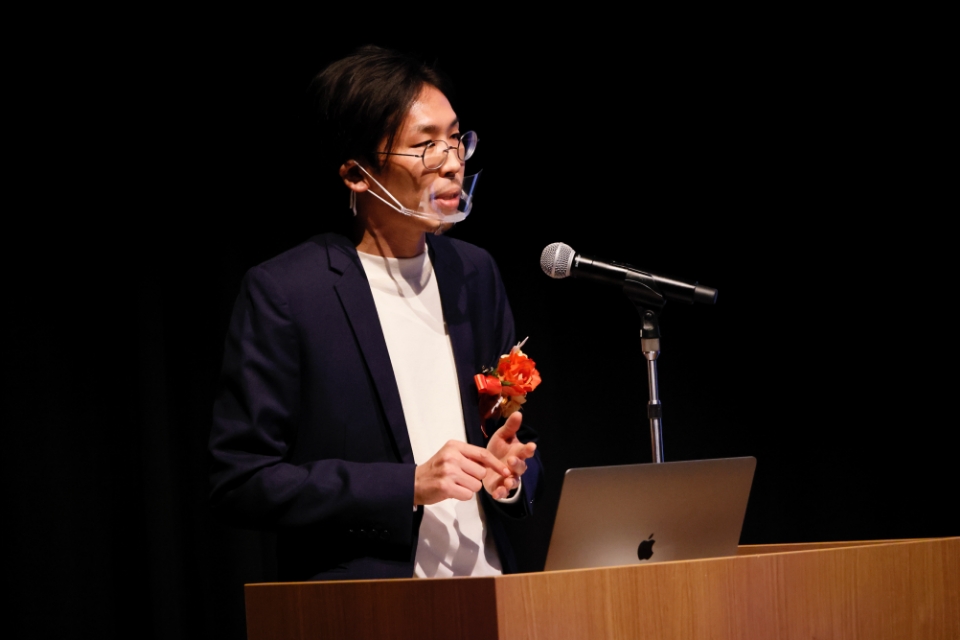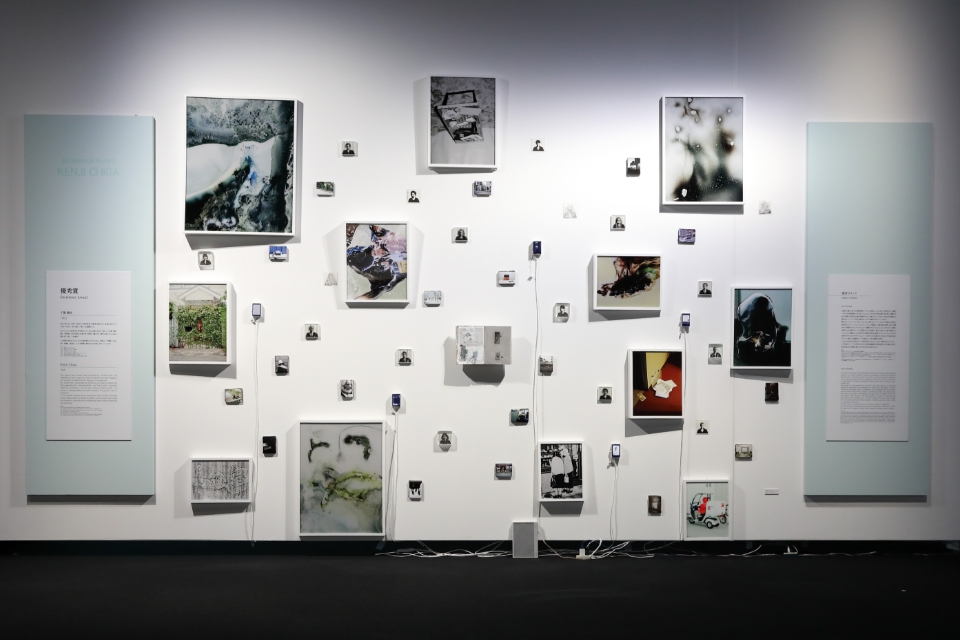PRESENTATION
“OS” is the code word criminals use for phone scams in which they pretend to be a relative in distress. I'm interested in youth poverty issues, and in the course of my research, I learned that poverty drives some youth into OS phone scams and similar criminal acts. This fact raised questions in my mind and piqued my curiosity.
Around the same time, I was contacted by the police, who let me know that my mother's name was on a list criminals had prepared of potential marks. That got me even more interested. I can understand the frustration of impoverished young people, but I can also imagine the feelings of the scam victims and their families. I began this work because I thought it possible to examine society surrounding OS scams from these two opposing perspectives.
The work consists of photographs of places, people, and abstract images. I wanted to take pictures of real crime scenes, but I thought it would be difficult to identify them as crime locations. So I took inspiration for my photos from photos and videos from news reports and secondary sources such as wire stories and movies, as well as online maps, to imagine what happened at the scenes. Therefore, my work is a mixture of truth and fabrication.
I was able to interview former scammers and their victims, but I decided not to photograph them. All the faces, young or old, that appear in the work are photos of myself that I manipulated with an app. OS phone scams are dubbed “invisible” crimes or “staged” crimes. Just as the scammers play different characters on the other end of the phone, I too became different characters in the work that resemble, in turn, victims and perpetrators.
Another source for my abstract images was the reality that it is always low-ranking gang members who get nabbed for the “invisible” crime of OS phone fraud; the gang masterminds are never caught. The leaders print any incriminating notes or documents on water-soluble paper that they can quickly disintegrate in water if they sense the police are closing in on them. Because they destroy any evidence, it is impossible to tell who is connected to whom or who ordered the people to play the roles of “cash collectors” or “cash withdrawers” in the scams. As a way of portraying these invisible connections, I printed faces and places on water-soluble paper and then photographed the paper actually disintegrating to add abstract images to the work.
My original work is a book, so it flows sequentially at a speed fixed by the turning of pages. I structured my exhibit to convert the sequence seen in the book in such a way that it could be represented on a wall.
Each piece appears to be placed squarely at the viewer, but when viewed at a distance, all the pieces look crooked, casting shadows that make them look warped. If you look closely at the small portraits, they are incoherent; from the left, the person appears young, but from the right, the person appears elderly. Depending on where you stand, you are on the victim's side, on the perpetrator's side, or in a position of indifference — representing how society's views on OS phone scams diverge.


I understand that what you are trying to show in this work is the “invisible”. Visualizing what can't be seen is a real challenge. I can tell you invested a tremendous amount of ingenuity and energy to bring the invisible existence of OS phone fraud to the surface in your work and installation — such as printing your own portrait on water-soluble paper and then dissolving the image or slanting the pictures with respect to the exhibition so they can't be viewed straight on or creating images that change as you move from left to right. On the other hand, these are clever presentation devices, but the giant, invisible forces behind the scams do not depend on such physical characteristics. No matter how ingenious your ways of presentation are, they are only physical characteristics. So, for me, the work did not bring forth anything invisible in the background. I was a little puzzled by how one would go about making the invisible visible.
(Chiga)
Rather than the invisible criminals, I was thinking about how both victims and perpetrators in OS phone scams are difficult to see in our society. The criminal whose face you can't see and the victims who hide their injuries. In some cases, the victims aren't even aware of the harm in the first place. Many of the perpetrators are people who lost their job in society and happen to find job offers on social media that lead to these crimes. I posit that these people are creating relationships in invisible places. I structured the exhibit with the intention of revealing these invisible connections.

I was blown away immediately by how elaborate your presentation was. The grander the presentation, the harder it is to make out what is at the core. I thought this was a great representation of the OS scam. Listening to your presentation now, I understand how much research you did into this topic. At the same time, I wondered why this had to be done with photography. What kind of tool is photography for you?
(Chiga)
I think of photography as a method of showing that something is present in reality. Of course it's possible to tell lies with photography, but the viewer recognizes that the something is there. Given that OS scams also involve the telling of lies, I thought photography would be appropriate for this project.

Judges' comments and Q&A
Yuki Onodera (selector)
I judged this work in its book format. I couldn't actually touch it because we were judging remotely, but the book was as thick as a phone book. The OS phone scams themselves are not unusual, but I was very impressed with your ability to create such a multilayered work using abstract images, document-like text, and photographs of individual people. I was wondering the whole time how you would exhibit all this content. So I was very pleased to see the care you took to ensure not everything looked plain and factual, such as the slanted handmade frames.
It's hard work to render something like a book with a time axis on a flat surface. How long did it take to create the book? Is it possible you will create works not based on research like this one? And what do you think of such works?
(Chiga)
This work is a project that I got into in 2019. Over a period of about two years, I went through 12 revisions of the book to create the work I submitted. The work is not yet complete even still, and I plan to keep on developing it.
This work and my previous works have been based on social research. To create another kind of work, I think I would still need research, on myself if not on society, in order to truly understand the topic and simplify it.